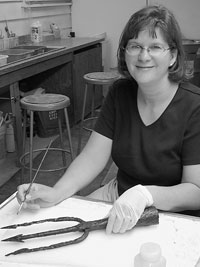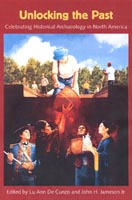Conserving Our Past
Lisa Young

A picture of the author, Lisa Young
As I sat there day after day repackaging boxes, I began to wonder why anyone would leave artifacts in such a way that jeopardized their survival. Overcrowded artifact boxes, ceramics crushed under larger objects, damp artifacts covered in mold, and metals corroded beyond recognition faced me in box after box. The physical damage to the artifacts was very visible, but something worse was happening--the data and information, the stories--inherent in the artifacts were disappearing as well. Information such as what past peoples ate, where they traveled, and what toys their children and grandchildren played with, would soon be gone.
I feel very fortunate to be practicing archaeological conservation at a time when awareness of conservation is growing exponentially within the archaeological community. As students become educated in all facets of archaeology--including conservation--the process of preserving our past will become much easier, with conservation beginning before artifacts are taken out of the ground and not after they have been stored on a shelf for thirty years. The information, secrets, and stories attached to those artifacts will survive for future students, archaeologists, children, and adults to rediscover once again. And most importantly, we’ll know we have all done our part toward securing the survival of our past for future generations.
About the Author:
Lisa Young is an archaeological conservator and President of Alexandria Conservation Services, Ltd.
